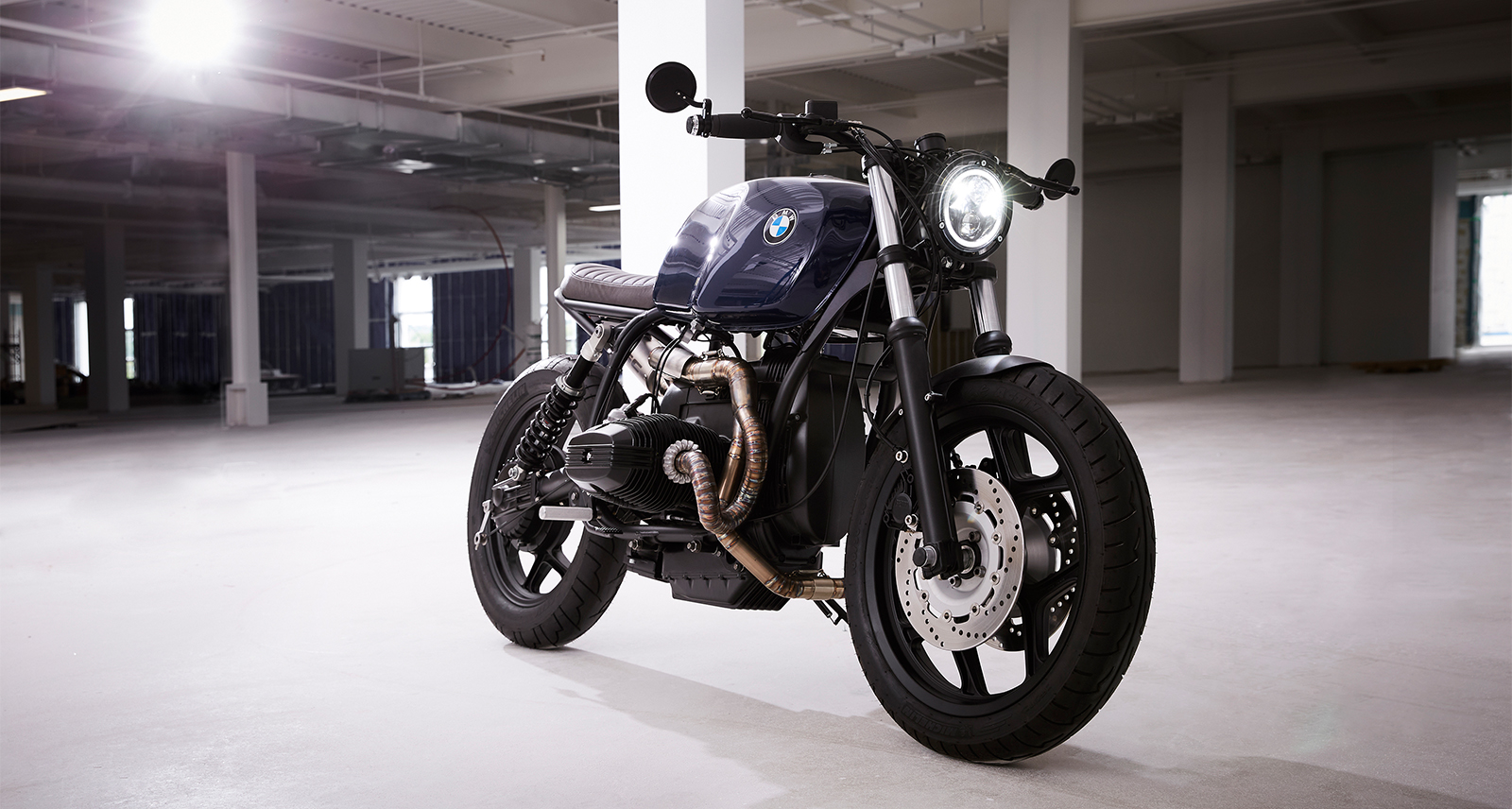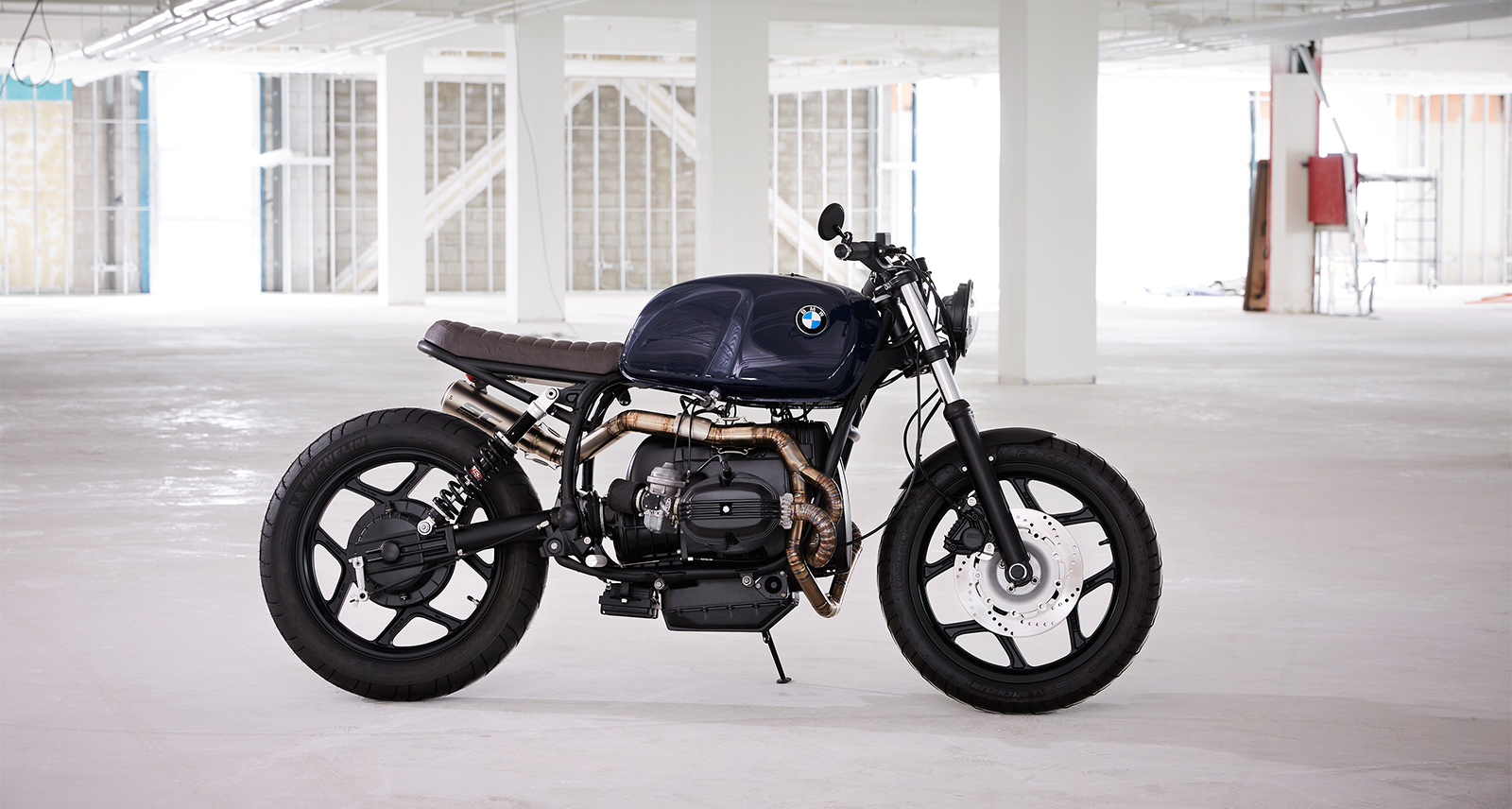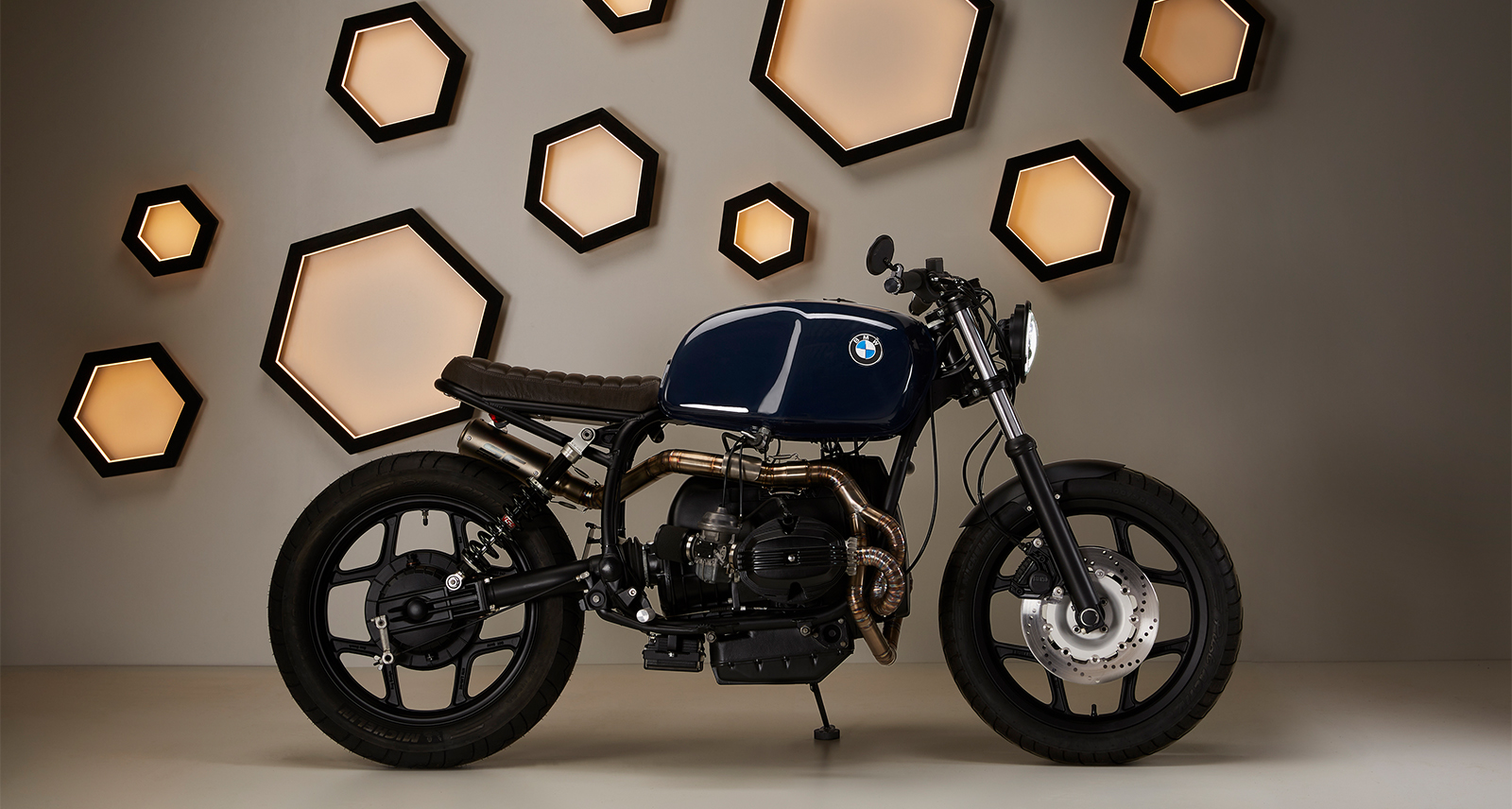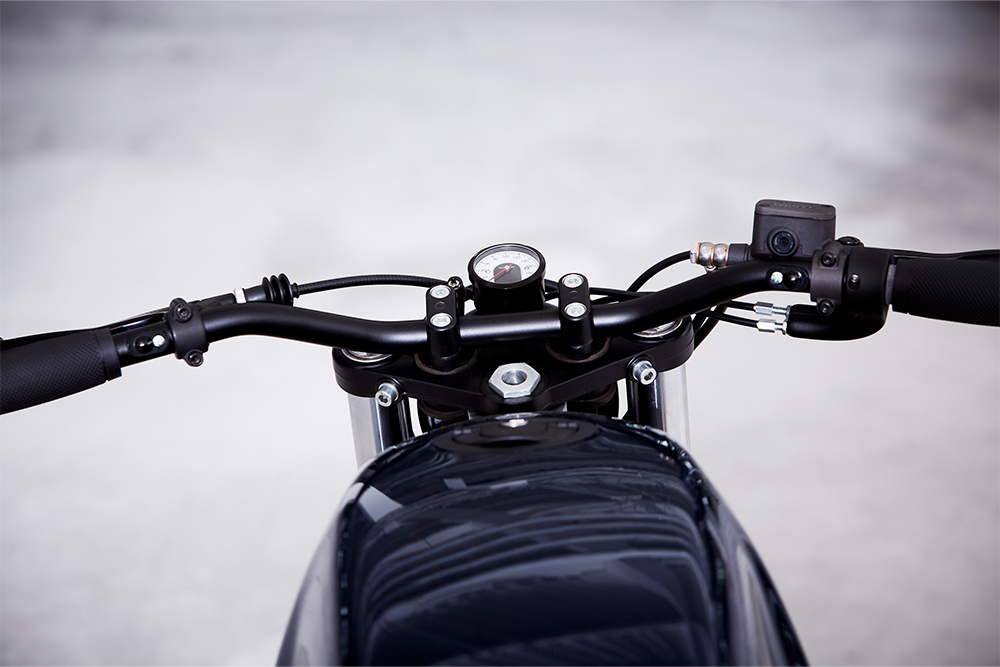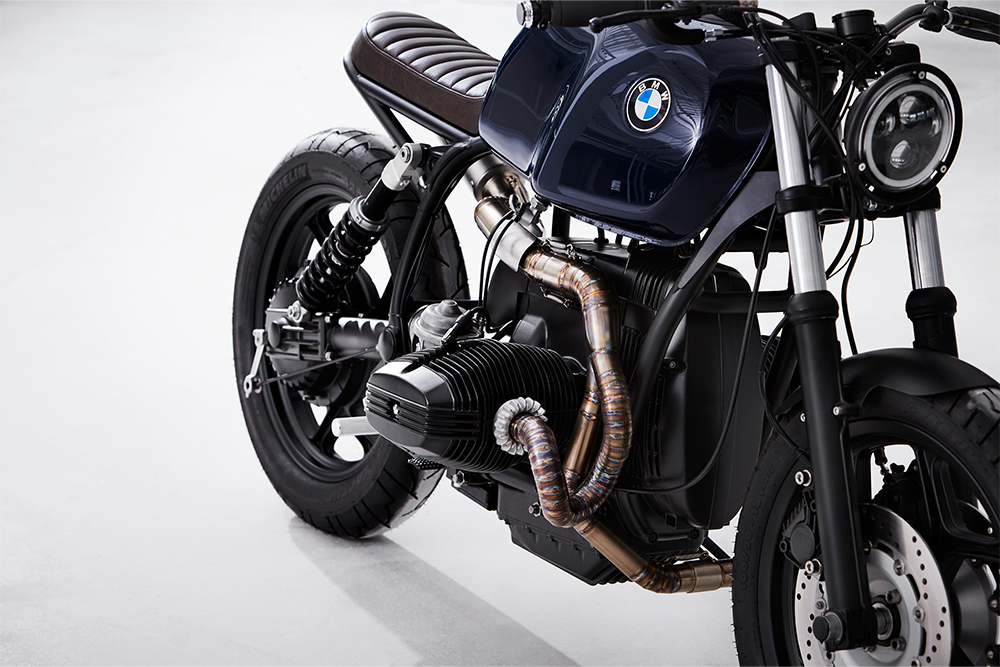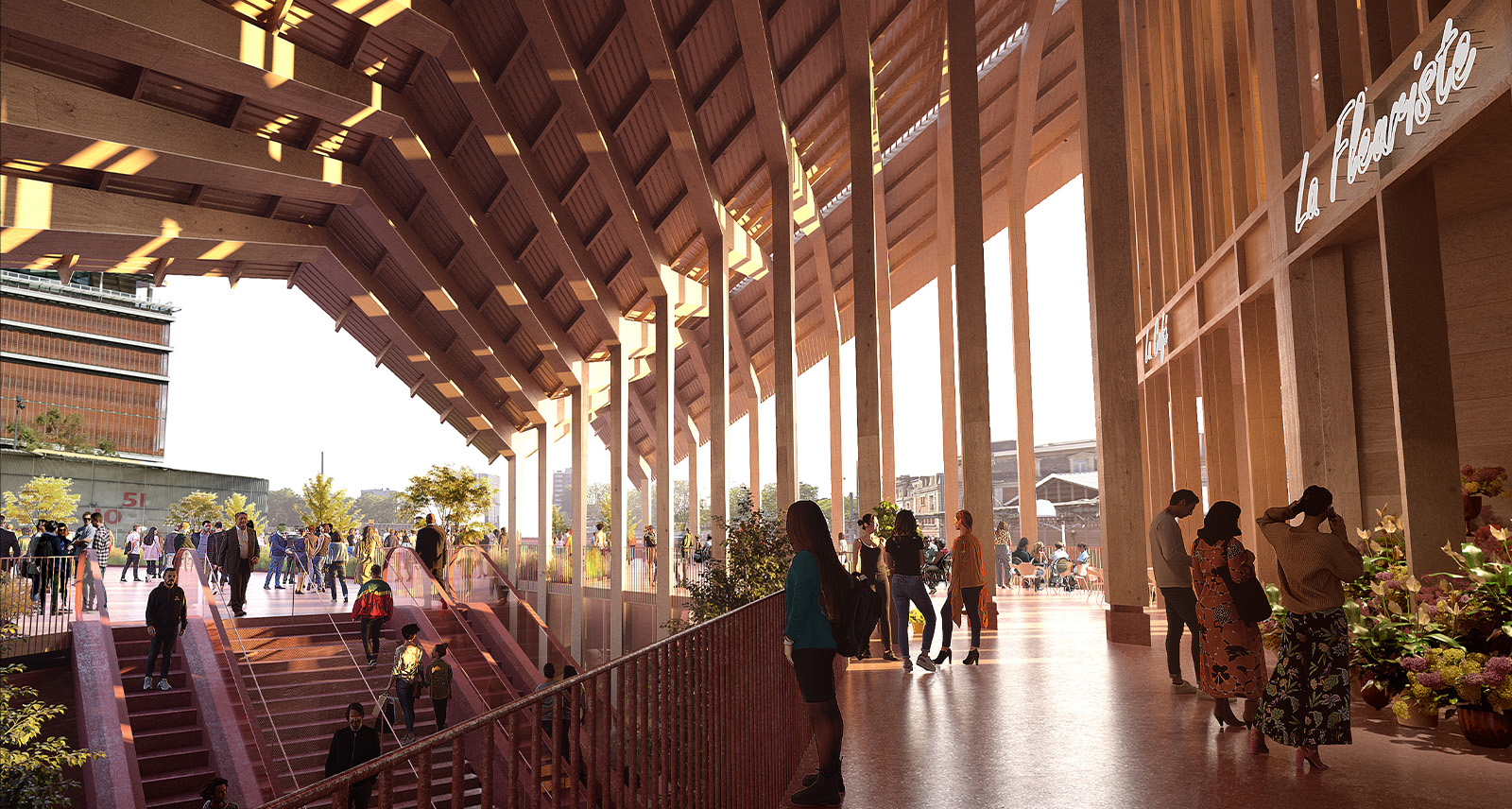How One Industrial Designer Built His Pandemic Escape Vehicle
“I take my time but will go fast,” says Mischa Couvrette, the creative director of Hollis+Morris, a furniture and lighting design firm in Toronto. We’re sitting at a café on Dundas Street West; the traffic is loud, but he’s calm in the fray. We are, after all, talking about his newly refurbished motorcycle. With its tank pitched forward, its stance — like Couvrette’s — is dauntless. Like the bike, he navigates a jam beautifully. The bike began as a poorly reworked 1986 BMW R80 that Couvrette had bought pre-pandemic. Despite limited access to resources, he needed to get the bike up to speed during COVID. “Freedom,” he says, “has been my top priority since I can remember; being able to travel and do whatever was always the goal.” In response to the pandemic’s challenges, he flipped his usual fast, process-driven approach to design, slowing down to focus on form first. He collaged favourite bike components together using Photoshop, then passed this sketch along to Brian Kates of Motobrix, a custom motorcycle builder in Scarborough.
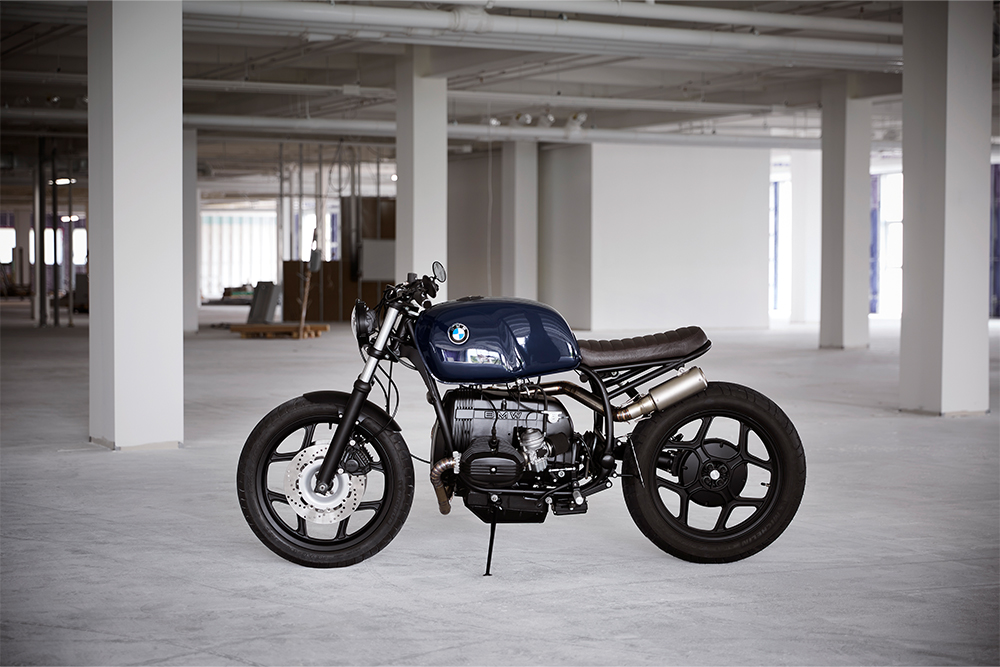
Kates disassembled the donor bike and went through Couvrette’s checklist: tilt the tank forward by seven degrees; reconfigure the back end so that the seat followed the angle of the tank; set the stainless-steel exhaust pipes asymmetrically. After the non-essentials were stripped, it was made even leaner by hiding the computer boards and wiring. Following a year of body work and a mid- night-blue paint job, it’s now a nimble tracker ready to rip and cruise. “It took about 20 hours of riding it to really understand what the bike had become,” Couvrette says. “It took hitting a bump and taking turns to perfect the final iteration. After we loosened the suspension for a softer ride, it’s now perfectly set up for me.”
Surge ahead and hang back — this is how Couvrette entered design in the first place. While finishing his degree in marine biology and environmental science at Dalhousie University, Couvrette became disillusioned with how slowly change happened in these fields. Instead of paradigm shifts, Nova Scotia was banning plastic bags. As he struggled with his predicament, a chance to buy a boat arose. Couvrette and “three other idiots” — artists and English majors — spent two years refurbishing the 11-metre-long metal and fibreglass vessel before sailing it to Guatemala. “Every single thing was wrong with it. But it was the start of this journey that I was on. [Even] twenty something Mischa was infatuated with freedom.”
Couvrette, now 36, returned to Toronto a year later and enrolled in a furniture design course. But he became frustrated again, this time by economies of scale, production lags, and dwindling Canadian manufacturing. So he decided to open his own shop. Today, with Hollis+Morris, Couvrette operates a 13,000-square-foot facility north of Toronto and releases two collections of minimalist lighting and furniture annually. The company’s catalogue of biomorphic and geometric designs (made from metal, glass, and renewable wood) is a success.
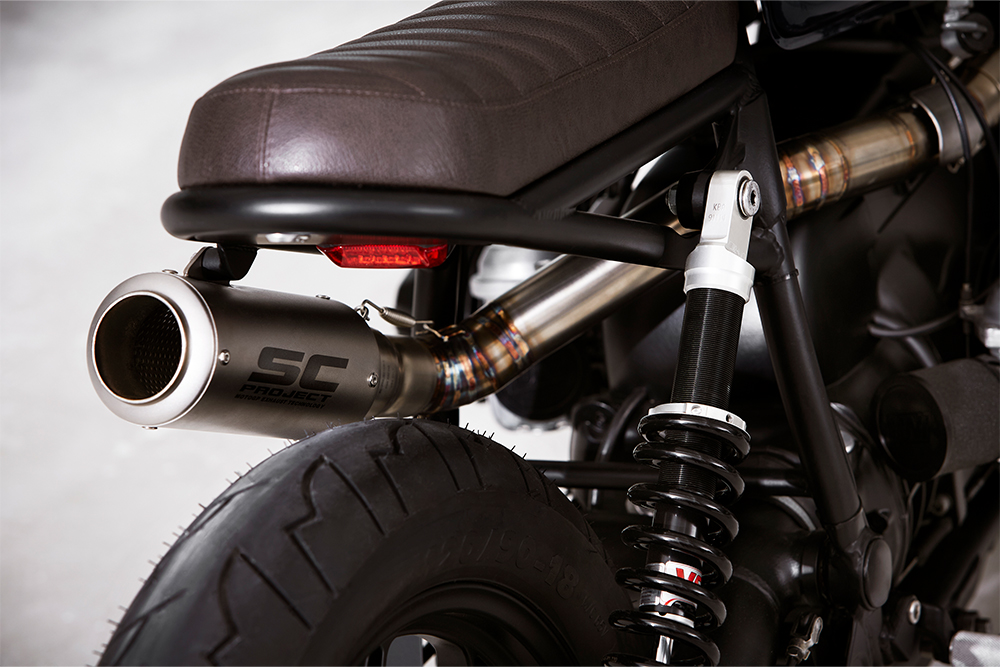
He credits his success to instinct — he knows when to outsource — and to his on-site prototyping lab, without which he’d be unable to rapidly experiment. This frees up precious time for him to finesse the output. Because — unlike the bike, which he “drew” first — a Hollis+Morris product’s form is the result of process. In the prototyping lab, he “smashes” ideas, materials, and techniques together, testing the capabilities of his tools. During the pandemic, he experimented with new materials and methods and quickly came up with Hollis+Morris’s 2021 collection. This includes a solid wood pendant steam-bent into a delicate horseshoe inlaid with LEDs, a bulbous sconce illuminated by a glowing disk of sanded acrylic, and Willow, a versatile luminaire with a spiral of hand-blown glass orbs and a power source stealthily tucked into a junction box. The composure of the collection belies the joyful fervour he put into it.
Couvrette’s pursuit of freedom has always inspired his approach to design. No matter what he’s building, he always knows when to shift gears.
